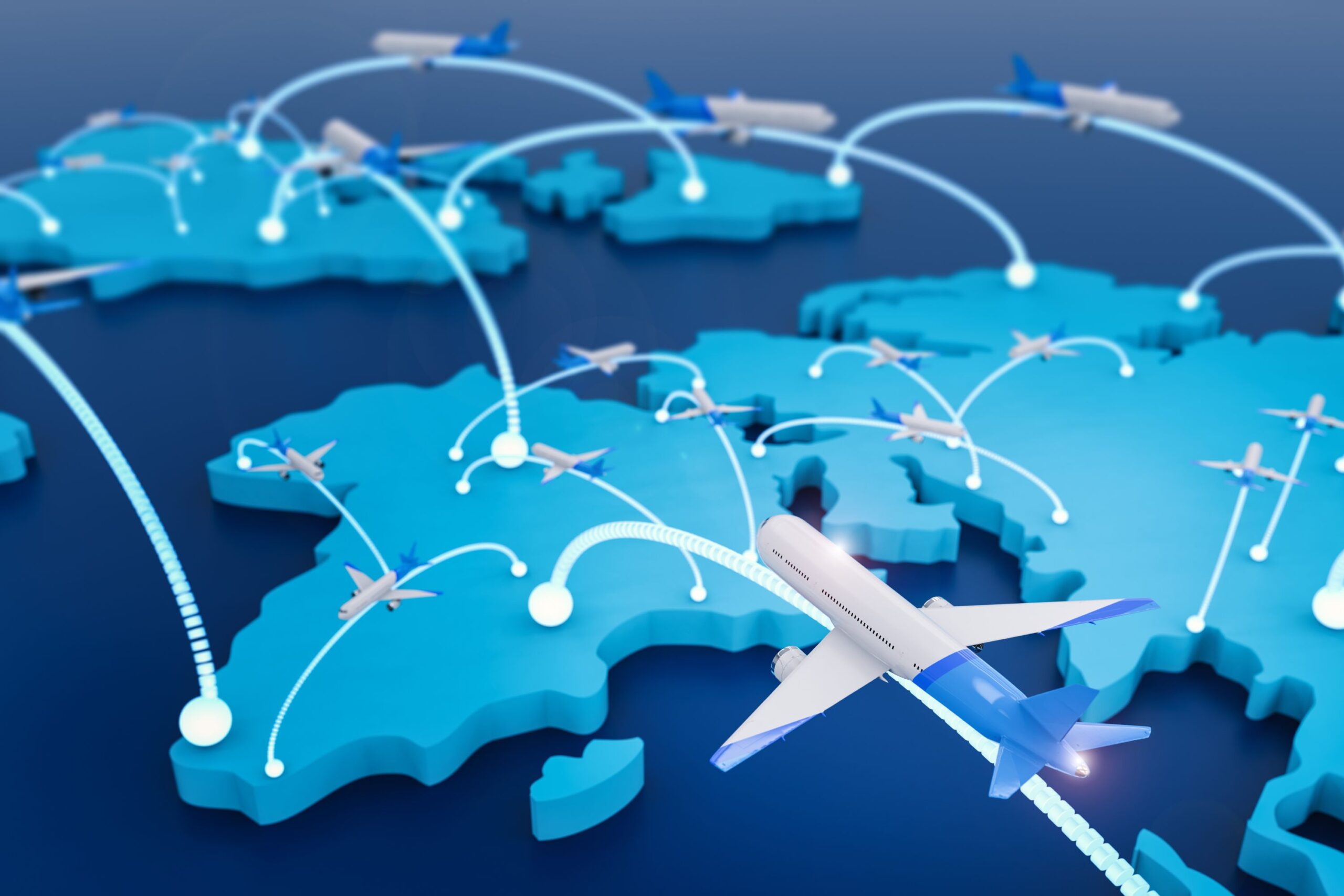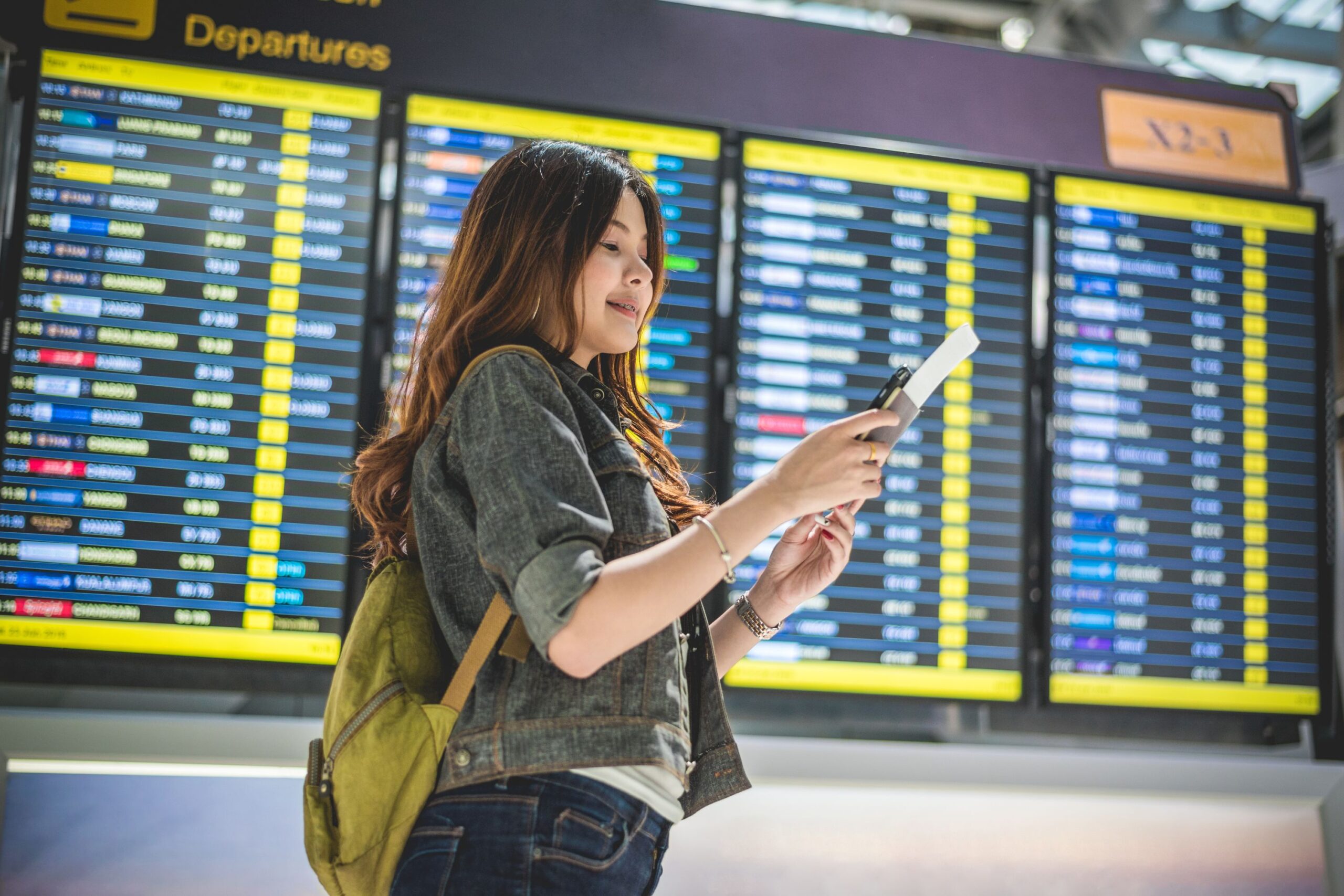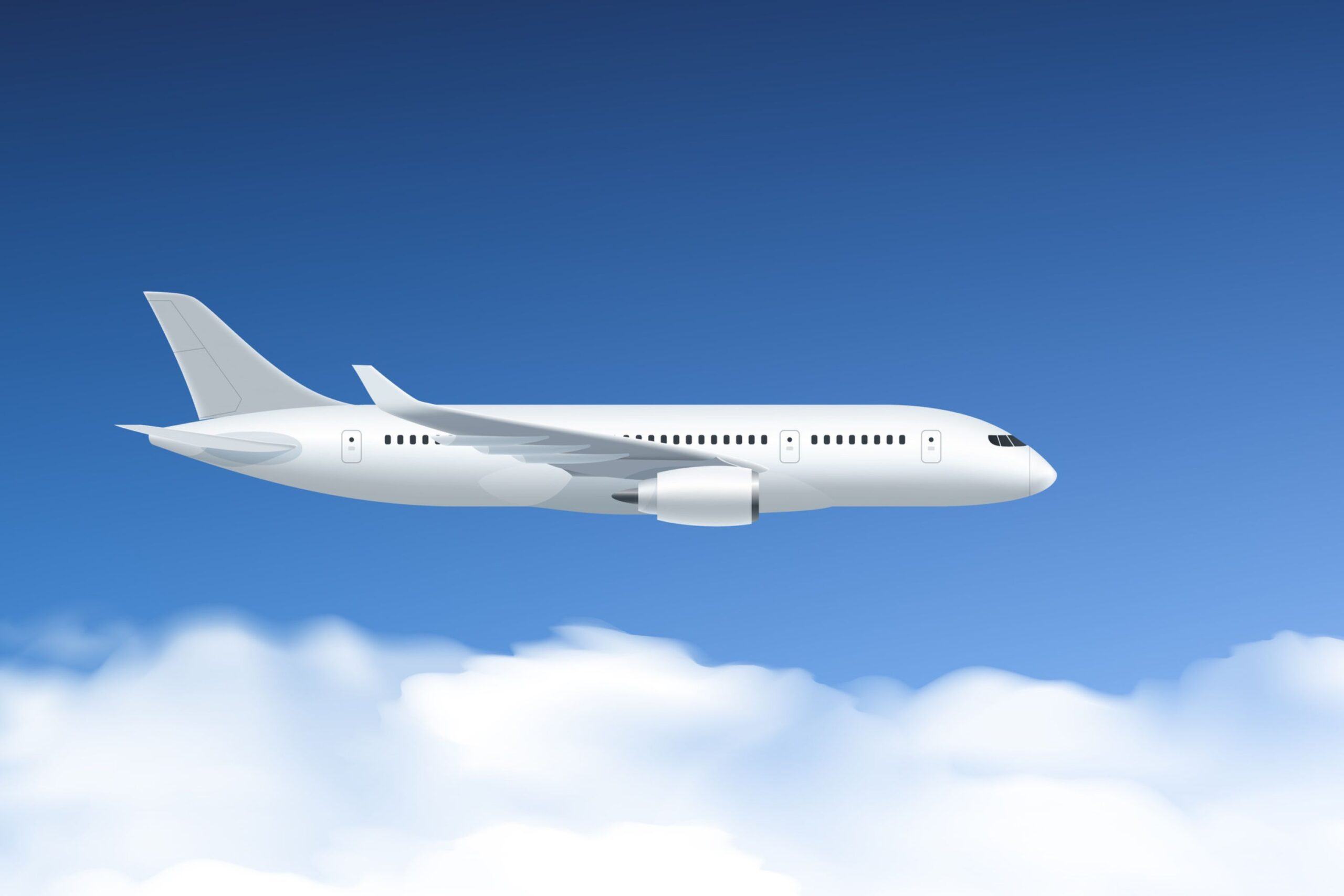When planning a trip, timing can make or break your budget. And while most travelers focus on choosing the cheapest days to book flights, it’s just as important to know the opposite: what is the most expensive day to fly? This small information can save you from overpaying for your ticket without realizing it.
Why Day of the Week Matters When You Book Flights
The day of the week you fly matters more than you think. Airlines use complex pricing systems that adjust fares in real time, based on demand. If you fly on a day when everyone else wants to fly too, the cost will increase. Choosing your departure day carefully could be the difference between a great deal and a painfully overpriced ticket.
So, what is the most expensive day to fly? In most cases, it’s Sunday. This is when prices spike, especially for return flights. Think about it: business travelers want to return before Monday, and weekenders are wrapping up their short trips. That creates a surge in demand for which airlines are more than happy to charge extra.
Sundays: The Peak Day for Airline Prices
If you’ve ever checked flight prices for a Sunday departure or return, you may have noticed a steep climb compared to the midweek rates. This isn’t just a coincidence. Sunday is the most expensive day to fly for domestic and international routes. Airlines know that many people try to squeeze in one last vacation day before the workweek begins, and they adjust prices accordingly.
For example, return flights scheduled on Sunday evenings often sell out fast. If you’re flying out of a central hub like New York, London, or Los Angeles, you’ll likely pay a premium. In contrast, the same flight on a Tuesday or Wednesday might cost significantly less, even with the same airline and itinerary.
If you’re looking for savings, skipping a Sunday flight can already put you ahead.
Fridays Can Be Pricey Too – Here’s Why
While Sunday often tops the list, Fridays also see higher prices. This is especially true for outbound flights. When people plan weekend getaways, Friday is the go-to travel day. Business travelers are also wrapping up their workweeks, heading home, or flying to meet clients. So, Friday flights—especially in the morning and late afternoon—can also come with inflated price tags.
The most expensive day to fly varies slightly depending on whether you’re leaving or returning, but Friday is a strong contender. The pattern is clear: flights bookend the weekend with peak demand.
The Holiday Effect: Why Special Dates Change Everything
Now let’s add another layer—holidays. The most expensive day to fly can shift dramatically when traveling around major holidays like Christmas, Thanksgiving, or the Fourth of July. During these periods, airlines capitalize on fixed schedules and limited flexibility. Most travelers don’t have the option to shift by a few days, and prices reflect that.
Flying the day before Thanksgiving or returning the Sunday after? Prepare to pay a premium. During Christmas, the days right before and after the 25th usually cost the most. The same goes for New Year’s, where December 30th and January 1st flights are typically the most expensive.
In these cases, the “most expensive day to fly” is not about the day of the week but the calendar date. So if you have the option to travel off-peak or shift your plans slightly, it can make a profound difference in the final ticket price.
Timing and Booking Windows Matter Too
It’s not just the flight day that affects how much you’ll pay—when you book also matters. If you’re booking at the last minute for a Sunday flight, you’re hitting high-demand timing and a short booking window. That’s a double hit to your wallet.
Try to book at least 21 to 30 days in advance for domestic flights and even further ahead for international ones. The farther you are from the travel date, the more pricing flexibility you’ll have, especially if you’re targeting days that aren’t part of the typical high-cost pattern.
Booking too early isn’t always best either. If you’re looking 6 to 9 months ahead, airlines might still have placeholder prices higher than they’ll settle on. But you’ll likely secure the best rate if you’re checking flights within that sweet spot and aiming to avoid flying out or back on a Sunday.
How Flight Routes Influence the Most Expensive Day
Flight pricing also depends heavily on the route. A short domestic hop might not follow the same pricing patterns as a long-haul international flight. For example, business-heavy routes like New York to Chicago or London to Frankfurt often see high prices during the workweek, especially Mondays and Thursdays.
However, leisure-focused routes—say, Los Angeles to Honolulu or Paris to Rome—tend to follow the weekend trend more closely. In these cases, Sunday is the most expensive day to fly, especially for those trying to return before Monday morning.
Think about the travel purpose of your route. Is it mostly business or mostly vacation? That will help you anticipate which day will hit your wallet the hardest.
Weekend Travel vs. Midweek Flights: Real Price Gaps
The cost gap between weekend and midweek flights isn’t small. You might often pay 15% to 40% more for flying on a high-demand day. That extra cost adds up quickly for families booking multiple tickets or travelers planning a long journey.
So, what is the most expensive day to fly? You now know it’s usually Sunday, often followed closely by Friday. But that doesn’t mean you’re stuck with high prices. You’ll frequently find dramatically better deals if you can travel midweek, especially on a Tuesday or Wednesday.
Some travel sites even recommend setting price alerts and tracking flights on different days of the week to find the patterns for your specific route. It’s not a one-size-fits-all situation, but the Sunday rule tends to hold up in most cases.
Time of Day Also Affects Ticket Prices
While figuring out the most expensive day to fly is essential, there’s more to the puzzle. The time of day you fly matters too. Peak hours—usually early morning and late afternoon – cost more. These are the times when most people want to fly, either to start the day early or return after a full day of work or travel.
For example, a flight leaving at 7 AM or 5 PM on a Sunday will almost always be more expensive than going at 11 AM or late at night. Red-eye flights or midday departures are usually cheaper because they’re less convenient. If you’re okay with flying at odd hours, you might find relief even on a traditionally expensive day.
So if you’re stuck flying on a Sunday, one option is to look for off-peak departure times. You might not altogether avoid the premium, but it could reduce your cost.
Cabin Class Pricing Follows the Same Pattern
Flight class matters too. If you’re flying economy, Sunday fares will usually be at their highest. But the difference is even more dramatic in premium cabins. Business and first-class tickets often surge far more than economy on high-demand days.
Airlines price these seats based on traveler behavior. Since most business travelers prefer comfort and flexibility, they book premium seats, and many return on Sunday nights. That drives prices up even further. So if you’re planning to book a higher class, expect Sunday and Friday fares to stretch well beyond midweek rates.
When you have a flexible travel schedule, flying business class on a Tuesday instead of a Sunday could cut your ticket price in half.
The Role of Algorithms in Flight Pricing
What makes one day more expensive than another isn’t just about the calendar. Behind the scenes, airline pricing algorithms are constantly shifting fares based on real-time demand, booking history, and market trends.
Thousands search for return flights from Cancun to New York on a Sunday. The system recognizes that interest and bumps the price accordingly. It might even do this minute by minute. So when you hear that prices are dynamic, it’s not just a buzzword—it’s how airlines operate.
These algorithms also take into account historical data. If last year’s numbers showed that most travelers flew home the Sunday after Christmas, this year’s prices for that same Sunday will start high from the beginning. You’re not imagining things when prices look outrageous—it’s a predictive strategy based on previous behaviors.
Booking Tools and Apps Can Help You Track Expensive Days
If you’re wondering how to spot the most expensive day to fly for your specific route, flight tracking tools will be your best friend. Apps like Google Flights or other fare prediction platforms help visualize the pricing landscape day by day.
These tools show you a calendar view of prices and trends to compare a Tuesday with a Sunday at a glance. If you must travel on a tight schedule, seeing these differences will help you make better decisions.
It’s also worth setting price alerts. That way, if an airline drops a Sunday fare unexpectedly, you’ll be the first to know. Discounts and flash sales can sometimes make expensive days temporarily more affordable—but only if you’re quick to book.
Can You Ever Score a Deal on a Sunday Flight?
Believe it or not, yes—though it’s rare. Sometimes, airlines undersell certain Sunday flights and need to fill seats fast. When that happens, they drop prices for a short time. But this isn’t something you can plan for—it’s luck combined with timing.
You might find a workaround if you’re flexible with airports or even willing to connect through a different city. Flying into a nearby town on Sunday and finishing your journey by train or car might save money. This works best in regions with strong transportation networks, like Europe or parts of the U.S. East Coast.
Another option is to use travel rewards. If you’ve collected frequent flyer miles or credit card points, burning them on a Sunday flight makes sense. That way, you’re not paying extra cash on the most expensive day to fly—you’re using miles instead.
Flexibility Is Still the Most Powerful Tool
If you want to beat the system, flexibility is your best friend. Even shifting your travel date by one or two days could yield significant savings. Let’s say you originally planned to return home on Sunday night. If you fly out Monday morning instead, prices might drop by 30% or more.
Of course, not everyone has the freedom to change plans. But if you’re working remotely, studying, or just traveling for fun, keeping your schedule open can help you avoid peak pricing.
Also, don’t just check one airline. Compare multiple carriers across various booking platforms. Sometimes, one airline charges more for Sunday flights while another offers a better rate simply because of availability.
International Flights vs. Domestic Flights
The cost patterns for domestic and international flights can differ slightly. International flights are generally expensive almost daily around holidays or peak seasons, but Sundays and Fridays still stand out.
If you’re flying from the U.S. to Europe, Sunday departures and returns cost more because they fit neatly into a week-long vacation. The same applies when flying into Asia, where many travelers prefer to depart on a weekend and return on Sunday or Monday.
Meanwhile, domestic flights in the U.S. or within Europe are more sensitive to weekly travel trends. Here, Tuesday and Wednesday remain the cheapest days to fly, while Sunday remains the most expensive day, especially for routes between major cities.
Expert Tip: Consider Nearby Airports
You might be locked into your travel dates, but not your airport. Avoiding high prices on expensive travel days is one of the easiest ways to avoid high prices.
Check Oakland and San Jose prices if you’re flying into San Francisco and planning to land in London? Compare Heathrow, Gatwick, and even Luton. Sometimes, the most expensive day to fly out of one airport is cheaper at another nearby hub. The extra 30 minutes of ground travel is worth it if it saves you hundreds on airfare.
Even if the price difference is minor, those savings can add up, especially when booking for more than one person.
Why Last-Minute Bookings Raise the Cost on Peak Days
Let’s say you waited until the week of your trip to start searching for flights. If that trip falls on a Sunday, you’re likely in for severe sticker shock. Last-minute bookings on peak travel days are almost always the most expensive combination you can get.
Airlines know that travelers who book late often do so out of necessity. Maybe your plans changed, or you needed to extend your stay. On days like Sunday, when demand is high, any remaining seats become premium real estate. So instead of discounts, you’ll find inflated fares—sometimes double or triple the price you would’ve paid weeks earlier.
That’s why it’s smart to plan, especially if you know your return or departure falls on the weekend. Booking early won’t always guarantee a bargain, but it will give you more control over the cost.
How Airlines Release Seats Over Time
To understand the most expensive day to fly, it helps to know how airlines manage their inventory. Flights don’t go from cheap to expensive in one jump. Instead, seats are divided into fare classes, and only a few are sold at the lowest price. Once those sell out, the next tier opens, and so on.
This is why checking a route on a Sunday might show prices rising every time you refresh. It’s not a glitch—the system works precisely as designed.
Those lower fare classes are booked quickly on expensive travel days, like Sundays or holiday weekends. That means you may only see higher fare classes available, even if you search weeks ahead. The earlier you jump in, the more likely you will catch a seat at the lower price tier.
Holiday Travel: Expect the Highest Fares
When you mix Sunday travel with a holiday period, you hit a pricing peak. Flights on the Sunday after Thanksgiving, the Sunday after New Year’s, or the last Sunday before school resumes after summer break are some of the highest-priced days of the year.
This happens because demand is nearly guaranteed. People are flying back to work, school, or home with little flexibility, and airlines capitalize on this. Supply and demand are in full force. And the worst part? Discounts rarely apply.
Book as early as possible if you’re planning holiday travel and can’t avoid flying on a peak day. Even if it feels too soon, you’ll likely beat the price increases that creep in as the date approaches.
Tips to Avoid Paying the Highest Price on Expensive Days
Even if you must fly on a Sunday or another high-cost day, you still have options to soften the blow. Here are a few strategies that work well:
Fly During Off-Peak Hours
As mentioned earlier, early morning and late evening flights are often cheaper. Red-eye flights, especially on Sundays, tend to stay more affordable.
Use a Stopover
Direct flights cost more, especially on peak travel days. However, you might find a much lower price if you can handle a layover. Connecting flights often sit in lower fare buckets longer.
Book with Points or Miles
If you have frequent flyer miles or credit card travel points, use them strategically. Expensive days are perfect for redemptions. Why spend cash when you can fly for free (or almost free)?
Check Multiple Airports
If you’re flying from a large metro area, search all nearby airports. Departing from or arriving at a secondary airport could save you money, even on a busy Sunday.
Set Price Alerts and Track Changes
Use fare comparison sites to set alerts. You’ll get notified when prices shift, allowing you to book if there’s a sudden drop, even on expensive dates.
Are Business Travelers Driving Up Prices?
Yes, in part. Business travel habits shape flight pricing, especially domestic and international business routes. Many business travelers fly out on Mondays and return on Thursdays or Sundays, creating repeat patterns that airlines recognize and price accordingly.
That’s one reason why the most expensive day to fly is often Sunday evening, particularly on high-traffic corridors like New York to London or Toronto to San Francisco. These routes are full of professionals wrapping up weekend travel and getting back for the start of the week.
If you’re traveling for leisure, avoiding these business-dense time slots and days can make a noticeable difference.
How Airline Sales Bypass Peak Days
Ever notice how those “50% Off Flight Sale” ads rarely apply to the dates you want to travel? That’s by design.
Promotional fares almost always exclude the most expensive days to fly—Sundays, Fridays, and holidays. The fine print usually points this out. Sales are designed to fill flights that might otherwise go out with empty seats, not those already guaranteed to sell.
That doesn’t mean sales aren’t helpful. But if you’re tied to peak travel dates, don’t expect those discounts to do you much good. You’ll either need to shift your schedule or explore alternative routes.
Midweek vs. Weekend: The Savings Difference
To put this into perspective, let’s look at average savings. A round-trip ticket booked for midweek travel—say, Tuesday to Thursday—could cost 20% to 40% less than one booked Friday to Sunday. That gap can grow even wider for international trips, especially if you’re flying across multiple time zones.
So while knowing the most expensive day to fly is helpful, it’s just as important to see what you’re missing by avoiding that day. Shifting your return flight by 24 hours could cover your hotel stay or extra travel activities.
That shift can result in hundreds of dollars in savings for frequent travelers or families booking multiple tickets.
Airlines Are Watching Your Searches—And That Affects Price Too
This might surprise you, but airlines and travel sites often track your search behavior using cookies. You might see prices increase if you check the same flight repeatedly, especially on a popular travel day like Sunday.
Some experts believe this is a tactic to create urgency and push you to book quickly. Try searching in incognito mode or clearing your browser history before rechecking prices to avoid this.
It’s another way to gain control when trying to avoid paying top dollar on the most expensive day to fly.
What Expensive Travel Days Mean for Different Travelers
So, you’ve seen that Sunday is usually the most expensive day to fly. But how that impacts your travel plans depends on who you are and how you travel. Let’s break it down by traveler type, because not everyone approaches flight booking the same way.
If You’re Traveling Solo
You have the most flexibility—and that’s your most significant advantage. You can shift your flight a day earlier or later without syncing schedules with anyone else. If you’re trying to save money, fly on Tuesday or Wednesday. If you must fly on Sunday, consider using points or going with a budget airline at an off-peak time.
Also, sign up for flight deal newsletters. These are especially useful if your dates are open. Sometimes solo travelers find huge savings simply because they’re willing to act fast when a deal appears.
If You’re Flying with Family
Families are often stuck with fixed school or work schedules, which makes avoiding Sundays harder. That’s when planning becomes crucial. Try to book at least two months in advance for domestic trips, and even earlier for international ones—especially if you’re flying during the holidays.
Also, be smart with airports. If one airport near your home has high fares on Sunday, check others within driving distance. A cheaper flight might be just one city over.
If You’re a Remote Worker or Digital Nomad
This group is in the best position to avoid high-cost days. You’re not tied to Mondays or Fridays. That means you can take advantage of Tuesday departures, Thursday returns, or midweek red-eyes.
You can plan trips that begin and end midweek. You’ll not only find cheaper flights, you’ll also enjoy quieter airports, shorter security lines, and fewer delays.
Should You Ever Fly on the Most Expensive Day?
Sometimes you don’t have a choice. Work calls, family schedules rule, or your dream vacation ends on a Sunday. If that’s the case, ensure you’re using every trick in the book—points, flexible times, layovers, alternate airports, and deal alerts.
Just remember, knowing the most expensive day to fly gives you power. Even if you can’t avoid it this time, you’ll be ready to make smarter decisions next time.
FAQs
What day of the week has the highest flight prices?
Sunday usually has the highest airfare, especially for return trips. It’s when most travelers want to fly home, so demand spikes and prices follow.
Why is Sunday the most expensive day to fly?
Sundays see high demand from weekend travelers and business flyers returning for the workweek. Airlines raise prices because they know travelers have fewer options.
Are Friday flights more expensive than Monday flights?
Often, yes—especially for departures. Fridays are popular for weekend getaways, while Mondays are more common for business travelers. Friday morning and evening flights tend to be the costliest.
How can I avoid paying more on peak travel days?
Book early, fly at off-peak hours, use nearby airports, consider layovers, and redeem points or miles if you have them. Tracking prices with alerts also helps.
Does the time of day affect airfare on expensive days?
Yes. Early morning and late evening flights cost less than midday flights on peak days. Red-eyes and less convenient times can reduce the fare, even on Sundays.
Are flights more expensive on holidays or weekends?
Both. Prices increase during holiday periods and weekends, especially when the two overlap. Booking in advance is essential during these times.
Is it cheaper to fly midweek?
Yes. Tuesday and Wednesday are usually the cheapest days to fly, with lower demand and fewer business or leisure travelers booking on those days.




